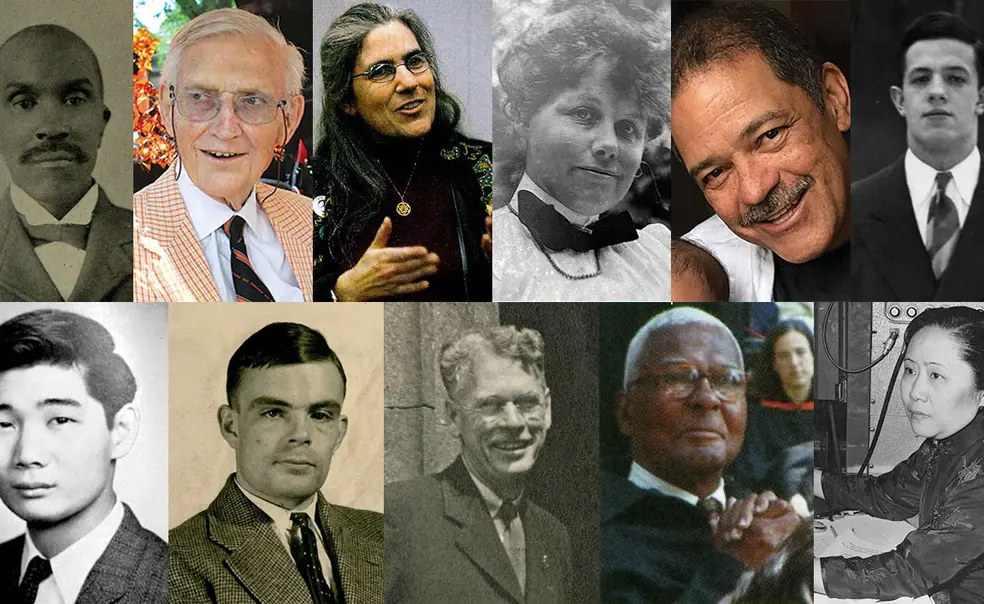Prospect House Rooms Named for Pioneering Princetonians
Rooms and spaces of the newly renovated Prospect House have been named after 12 undergraduate and graduate alumni, faculty, and members of the University community, Princeton announced in May.
The 19th-century National Historical Landmark in the center of campus, primarily used for faculty and staff dining and events, reopened in the fall after a yearlong renovation that enhanced accessibility and sustainability.
The Council of the Princeton University Community’s Committee on Naming solicited ideas for individuals who should be honored in 2023, and the committee’s final recommendations were approved by the Board of Trustees. The spaces will be dedicated at an event in the fall.
“Through honoring these individuals, we aim to tell a more complex history of the University,” Beth Lew-Williams, professor of history and then-chair of the Committee on Naming, wrote in the recommendation, according to the University. “When faced with adversity, these Princetonians persevered and excelled in ways that can serve as a model for future generations. We wish to honor these remarkable individuals, whose tenacity helped to shape the University and the world.”
The Wisteria Room/Parlor is named for Daniel Wallace Culp (1852-1918), a former slave, pastor, principal, doctor, and author who earned his degree from the Princeton Theological Seminary. According to the University’s announcement, Culp “attended Princeton University classes with the support of then-President James McCosh, despite objections from students,” and later “fought to raise awareness of Black intellectuals and their work.”
The Rose Room/Presidential Dining Room is named for John Doar ’44 (1921-2014), whom PAW previously dubbed “one of the most distinguished lawyers of his generation” for his role in fighting for and expanding civil rights. He was assistant attorney general for civil rights in 1964 and vital in the implementation of the Voting Rights Act of 1965. Years before he was awarded the Presidential Medal of Freedom by Barack Obama, the University awarded him an honorary degree.
The Terrace Café/Tap Room is named for Sally Frank ’80, the only living honoree, who, in 1979 as a junior at Princeton, filed discrimination lawsuits against the three eating clubs that still refused to admit women. In a 2008 issue honoring influential alumni, PAW dubbed her one of 12 who changed Princeton, reporting, “With remarkable tenacity and aplomb, Frank pursued her case through the courts for the next 13 years,” until 1992, when the last of the suits was settled. (Tiger Inn, the last of the all-male clubs, began admitting women in 1991.) Frank has been a law professor at Drake University since 1990.
The Magnolia Common Room is named for Katharine Fullerton Gerould (1879-1944), writer and wife of Gordon H. Gerould, an English professor at Princeton. She was on the faculty at Bryn Mawr College teaching English and writing before moving to Princeton with her husband. She “secured a life as a woman of letters,” PAW wrote in 2019, authoring three novels as well as short stories and essays published in magazines such as Scribner’s, Harper’s, and The Atlantic Monthly. As detailed in PAW’s portrait of Gerould, she “became a mentor to literary clubs of the University,” and the University’s library holds copies of all her writings.
The Beech Room is named for Charles Hey-Maestre ’77 (1955-2017), an advocate for Puerto Rico and the Latino community. At Princeton, along with Supreme Court Justice Sonia Sotomayor ’76 and others, he co-founded the student group Acción Puertorriqueña y Amigos to foster community for Latino students. He went on to earn a degree from NYU’s School of Law and then returned to Puerto Rico, where he grew up. As PAW reported in 2018, for four decades he was “a champion for the legal rights of the poor,” including as executive director of Puerto Rico Legal Services, which “represents tens of thousands of indigent clients every year.”
The Redwood Library is named for John Nash *50 (1928-2015), the legendary mathematician whose struggles with schizophrenia were made famous in the 2001 film A Beautiful Mind. Nash won the 1994 Nobel Prize in economics for developing “an important concept in noncooperative game theory,” PAW previously reported. He resigned from a tenured position at MIT as a result of his schizophrenia, and after decades of paranoiac delusions, returned to Princeton in 1984. He was a member of the faculty until his death, according to his memorial in PAW.
The Cedar Room is named for Franklin S. Odo ’61 *75 (1939-2022), who taught the University’s first Asian American history course as a visiting professor in 1995 and founded the Smithsonian’s Asian Pacific America Center. In his PAW memorial, the Class of ’61 reported that the professor and “prolific author” was “an internationally known pioneer and advocate for Asian American studies.”
The Garden Room is named for Alan Turing *38 (1912-1954), known as the father of computer science and hailed posthumously for his code-breaking work on behalf of the Allies during World War II. A panel of experts convened by PAW in 2008 named him the University’s second-most influential alumnus for his 1936 idea for “abstract ‘machines’ that function much like modern computers.” In addition to his work cracking the Nazis’ Enigma code, Turing envisioned “a time when machines would simulate human thought,” thus creating the Turing test. He died a few years after his arrest and conviction for indecency under British laws that criminalized homosexuality; Queen Elizabeth II posthumously pardoned him in 2014.
The South Terrace is named for Oswald Veblen (1880-1960), a longtime faculty member who helped shape the University’s mathematics department and advocated for displaced mathematicians. During WWII, he created “a republic of letters that was dedicated to helping to bring refugee scholars to the United States,” as PAW detailed in a 2018 cover story on Veblen. He also helped create not just Fine Hall, the first physical building for mathematicians on campus, but also the afternoon tea tradition that continues there today.
The Dogwood Room is named for Alexander Dumas Watkins (1855-1903), the University’s first Black instructor, according to the announcement. Although he wasn’t a formal member of the faculty, the self-taught biologist’s studies on mosquitoes served as early malaria research. The Princeton & Slavery Project reports that Watkins was a draftsman and janitor before coming to the University, where he worked for nearly two decades.
The Holly Room is named for Bruce Wright (1917-2005), a judge, poet, and civil rights champion. As PAW reported in 2022, Wright was admitted to Princeton on a full scholarship but had to leave after the University discovered he was Black. The honorary member of the Class of 2001, who partly grew up in Princeton, went on to become a member of the New York State Supreme Court, a poet who worked alongside Langston Hughes, and a prominent figure in the fight against racial injustice in the legal system.
The Hydrangea Room is named for Chien-Shiung Wu (1912-1997), who became the first female instructor in Princeton’s Department of Physics in the early 1940s and was one of the experimental physicists behind the Manhattan Project. Wu is known as the First Lady of Physics, PAW wrote in 2021, and some believe she was snubbed when her two collaborators won the 1957 Nobel Prize for determining that the universe favors left at the atomic level. In 1958, she received an honorary degree from Princeton.












No responses yet